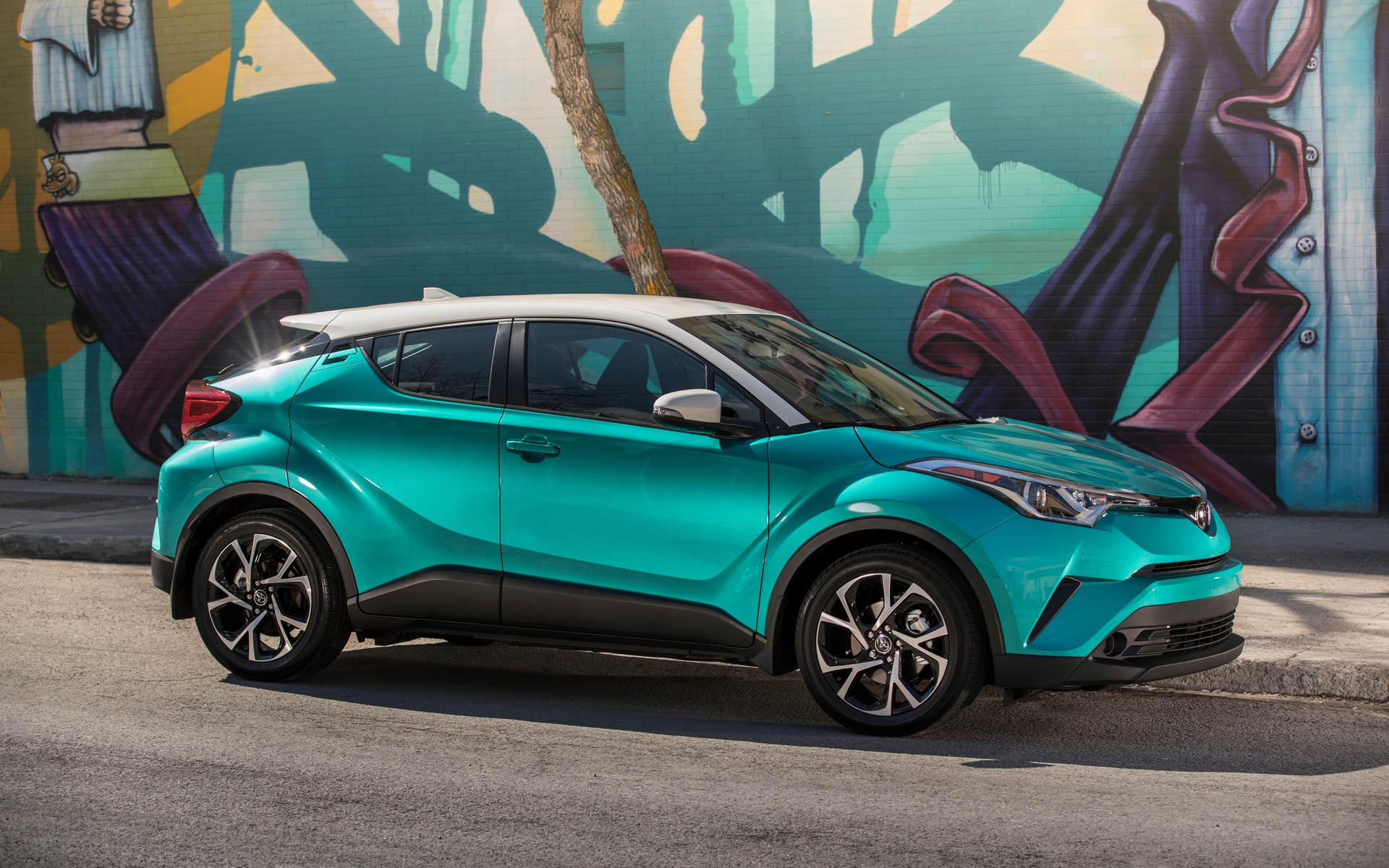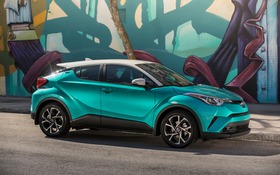2018 Toyota C-HR: Toyota's Sexy Diamond

| Strong points |
|
|---|---|
| Weak points |
|
Sexy Diamond. That’s what Toyota calls the 2018 C-HR. It’s the newest kid on the block in the white-hot subcompact SUV segment and it’s hitting Canadian dealerships on May 2nd of this year. With the C-HR, Toyota is making a bold statement. The latest Corolla and Camry moved the needle a little bit in terms of styling, but the C-HR’s look-at-me design is clearly dialled up all the way to eleven. This is not your dull fifty-shades-of-beige Toyota product, and I’m guessing that it was probably conceived shortly after someone spiked the fruit punch at the automaker’s office party, and then got the DJ to play “Let’s Get Wild.” Or something like that.
One thing’s for sure, the C-HR has out-Juked the Nissan JUKE, the back end looks very much like a Honda Civic hatchback, the roofline slopes back like a Range Rover Evoque and the shape of the rear doors are sure to make rear-seat passengers claustrophobic. Will it stand the test of time? We’ll have to wait and see.
Wild styling, but conventional powertrain
The 2018 Toyota C-HR is a front-wheel-drive crossover powered by a conventional 2.0-litre four-cylinder engine mated to a CVT automatic transmission. No all-wheel drive, not even as an option. Considering that a lot of its direct competitors, namely the Honda HR-V, Mazda CX-3, Jeep Renegade, Nissan JUKE and Qashqai as well as the Chevrolet Trax, all offer optional AWD, which is puzzling to say the least.

Questioned on that subject, Toyota Canada says that customers who need all-wheel drive can step up to the RAV4. Or buy one of the C-HR’s competitors, I guess… Pricing for the XLE trim is set at $24,690, and at $26,290 for the XLE Premium variant, a higher price point than some of its front-drive rivals.
In Europe, the key market for which it was designed, the C-HR is available with the same hybrid powertrain that powers the Prius, but that hybrid version won’t be coming to Canada. If you’re interested in a hybrid-powered SUV, buy a RAV4 Hybrid is Toyota’s answer. That’s unfortunate, especially given that Toyota is the world leader for hybrid drive and that the new Kia Niro, just introduced in the same segment as the C-HR, is a hybrid vehicle.
And so we wind up with a very modern-looking stunner that is all-too conventional under the hood. The four-cylinder engine develops 144 horsepower and 139 pound-feet of torque. The 2018 Toyota C-HR can get out of its own way, but the engine becomes fairly loud under full power before the CVT transmission sorts things out to create the required forward momentum.
A pleasant surprise for ride and handling
So is it all show and no go? Not quite. It may be lacking in the performance department, owing to its soul-sapping CVT automatic, but it makes up for it in dynamics. The C-HR is built on the very rigid Toyota New Global Architecture (TNGA) platform that underpins the fourth-generation Prius. It also rides on a McPherson strut front suspension and double-wishbone rear suspension, complete with very progressive shock absorbers, developed by European supplier Sachs, and thick anti-roll bars.
The end result is that the C-HR handles remarkably well, with nicely controlled body motions in corners and high-speed lateral transitions. The ride is firm, but not harsh, and the C-HR feels well planted in most circumstances. The steering is little over-boosted, but overall, ride and handling amount to a nice surprise.
The wild exterior styling of the C-HR is echoed inside the cabin with an asymmetrical infotainment screen, and the diamond motif, embossed in the headliner and other areas, is a nice distinctive touch. On the other hand, the look of the instrument cluster is rather old-school and there is a lot of dull black plastic all around.

Legroom is scarce in back and so is cargo volume, rated as 538 litres with all seats in place. That’s more than in a Mazda CX-3, but less than in a Honda HR-V. Sadly, the C-HR does not offer Apple CarPlay or Android Auto. That qualifies as a weak point, given that the young, upscale, connected clientele that Toyota is aiming for with the C-HR lives 24/7 with their smartphone. It wouldn’t be so bad if the C-HR had a navigation system, but it does not. No satellite radio or sunroof either.
The C-HR looks like a fun-to-drive runabout and delivers on that promise in the ride and handling department, although the performance level of the powertrain is a bit of a disappointment. It’s a Toyota, so we can expect that it will prove to be reliable, but resale value remains an open question, largely because of the polarizing styling.
All-wheel drive would be a plus, given our winter climate, and the offer of a hybrid powertrain would further cement Toyota’s leadership in that field, but none of those options are on the table, at least for now. Also, it needs Apple CarPlay and Android Auto. Badly. Bottom line is that it’s indeed a sexy diamond, but needs some more polishing.











